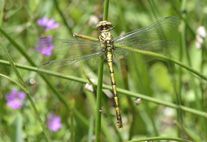Abstract
The structure and musculature of the male terminalia are described and illustrated in 11 genera of the tribe Cidariini (Lepidoptera, Geometridae, Larentiinae) from the Holarctic and Oriental regions. Nine genital muscles were identified: m1, m2(10), m3(2), m4, m5(7), m6(5), m7(6), m8(3) and m21. Variation in the insertion of the muscles m1, m3(2), m4, m5(7), m6(5) and m8(3) on the sclerites in several generic groups of the tribe Cidariini is discussed, revealing that the Thera species group does not share some apparently cidariine characters. A comparative analysis of the musculature in the tribes Cidariini and Xanthorhoini questions the sister relationship of these tribes that was suggested by earlier studies. The application of the terms ‘anellus lobes’ and ‘labides’ is discussed.

